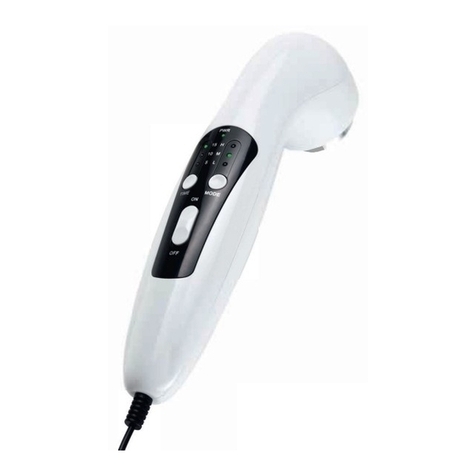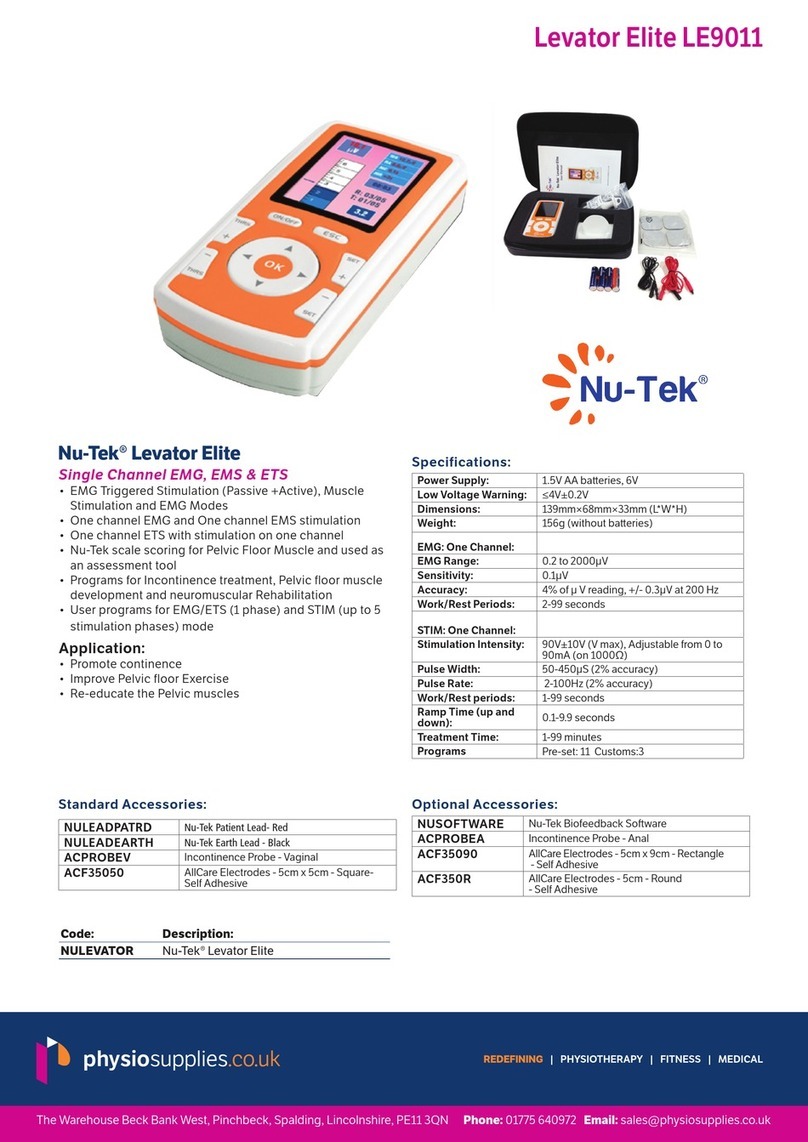
REDEFINING | PHYSIOTHERAPY | FITNESS | MEDICAL
physiosupplies.co.uk
The Warehouse Beck Bank West, Pinchbeck, Spalding, Lincolnshire, PE11 3QN Phone: 01775 640972 Email: sales@physiosupplies.co.uk
Interferential Unit
Power Supply: AC100-240V 47/63 Hz
Number of Channels: 2 independently controllable
IF Carrier Frequency: 2 - 10 kHz
Frequency: IF 1-200 Hz, Biphasic/NMS 1-250 Hz, HV
1-120 Hz, MCR 0.1-1000 Hz
Current Amplitude (peak): IF Russian 100mA, Biphasic/NMS 200mA
HV 500 V, MCR 1000uA, DC 80mA
Dimensions: 285mm (L) x 197mm (W) x 153mm (H)
Weight: 2kg
Certification: FDA Clearance, EU MDD, CFDA, TGA, CMD-
CAS, Russian approved
Safety Tests: IEC 60601-1, IEC 60601 2-5, IEC 60601-2-10
Electrical Safety Class: Class I, Type BF
Optional Accessories:
NUTROLLEY Nu-Tek Trolley
NUBATTERY Nu-Tek Baery Pack
Two Channel Electrotherapy
Nu-Tek® Stim Rehab2 − MT2200
Features & Benefits:
• Provided with the most common currents: 4-pole IF, 2-pole
IF (Premode), NMS,Russian, Biphasic (TENS), Hi-Voltage
(HV), Microcurrent (MCR), DC: Galvanic, Faradic,
Diadynamic (DF, MF, CP, CP-ISO, LP, RS)
• Touch screen for easy operation
• 2-channel simultaneous monitoring
• 42 pre-set programs and 80 custom programs provided
Standard Accessories:
Specifications:
Screen Shot:
Optional
Nu-Tek Trolley
NUPOWERCABLE Nu-Tek Power Cable
User Manual
NUELECRUB6090 Rubber Electrodes - 60 x 90mm (Pair)
NUELECRUB70110 Rubber Electrodes - 70 x 110mm (Pair)
NUSPOENV70100 Envelope Sponges - 70 x 100mm (Pair)
NUSPOENV80120 Envelope Sponges - 80 x 120mm (Pair)
ACF35050 AllCare Electrodes - 50 x 50mm Square (x4)
- Self Adhesive
ACF35090 AllCare Electrodes - 50 x 90mm Rectangle (x4)
- Self Adhesive
NUSTRAP751200 Nu-Tek Straps - 75 x 1200mm
NUSTRAP75600 Nu-Tek Straps - 75 x 600mm
NULEADSTIMGY Nu-Tek Stim Leads - Grey
NULEADSTIMBU Nu-Tek Stim Leads - Blue
Code: Description:
NUSTIM Nu-Tek® Stim Rehab2 - MT2200






























